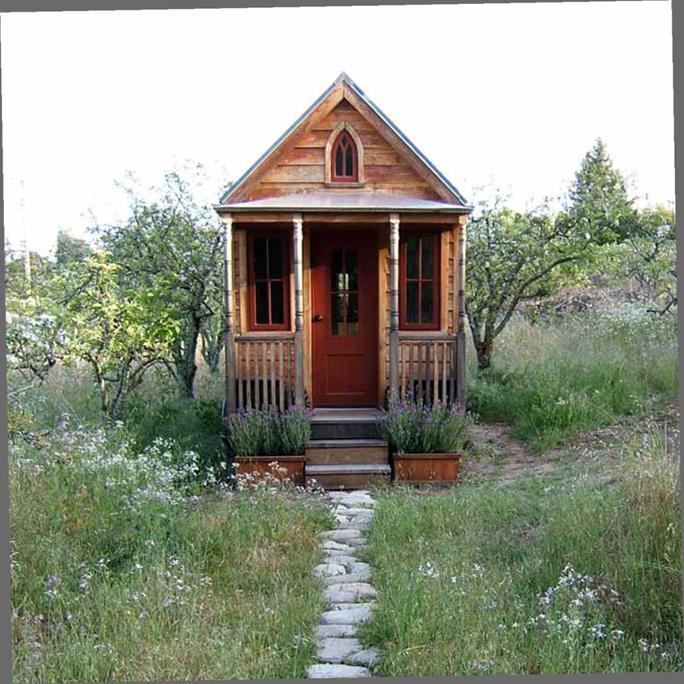Tumbleweed
It was not until after I thought I had already finished designing my little dream home that I became familiar with the term “minimum-size standards.” Up to this point, I had somehow managed to remain blissfully unaware of these codes; but, as the time for construction neared, my denial gave way to a grim reality. My proposed home was about one-third the size required to meet local limits. A drastic change of plans seemed unavoidable, but tripling the scale of a structure that had been designed to meet my specific needs so concisely seemed something like altering a tailored suit to fit like a potato sack.
I resolved to side-step the well-intentioned codes by putting my house on wheels. The construction of travel trailers is, after all, governed by maximum – not minimum size restrictions, and since Tumbleweed already fit within these, I had only to add some space for wheel wells to make the plan work.
looked a bit like American Gothic meets the Winnebago Vectra. A steep, metal roof was supported by cedar-clad walls and turned cedar porch posts. The front gable was pierced by a lancet window. In the tradition of the formal plan, everything was symmetrical, with the door at exterior, front center. Inside, Knotty Pine walls and Douglas Fir flooring were contrasted by stainless steel hardware. There was a 7’ x 7’ great room, a closet-sized kitchen, an even smaller bathroom and a 3’ 9”-tall bedroom upstairs. A cast-iron heater presided like an altar at the center of the space downstairs. In fact, the whole house looked a bit like a tiny cathedral on two, 3,500-pound axles.
The key to designing my happy home really was designing a happy life, and the key to that lay not so much in deciding what I needed as in recognizing all the things I can do without. What was left over read like a list I might make before packing my bags for a long trip. While I cannot remember the last time I packed my TV, stereo, or even the proverbial kitchen sink for any journey, I wanted this to be a list of items necessary not only to my survival, but to my contented survival. I am sure any hard-core minimalist would be as appalled by the length of my inventory as any materialist would be by its brevity. But then, I imagine nobody’s list of necessities is ever going to quite match anybody else’s. Each will read like some kind of self-portrait. I like to think that a house built true to the needs of its inhabitant will do the same.
![]() Tumbleweed (facing page)
Tumbleweed (facing page)
|
|







Leave a reply